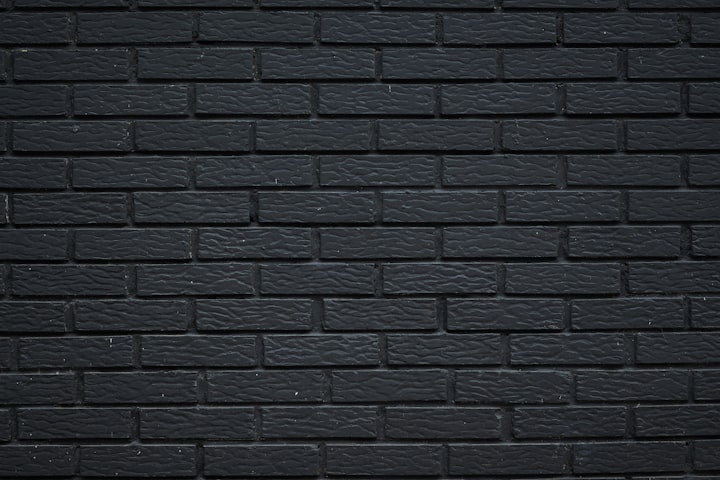Why coccyx pain appears when sitting and getting up: causes, diagnosis and treatment
How to determine the source of pain
The causes of cell phone pain while sitting and standing are manifold. Lower back disorders provoke inflammatory and degenerative-dystrophic lesions of bone, cartilage, soft tissues, ligaments, muscle, and tendon. The pains are sharp, short of breath, cutting or sore, heavy, dull. The discomfort of any intensity can only be removed after treatment of the pathology that caused it.
How to determine the source of pain
The tail bone or coccygeal bone is called the lower part of the spine, which consists of 4-5 fused vertebrae. It acts as an attachment site for ligaments, muscles, tendons, so it is somewhat wrong to consider it rudimentary. The loss of any connective tissue structure coupled to the joint tissue results in pain.
It is not difficult to understand that unpleasant sensations are located in this bone. There are several special characters:
- The area of pain is between the buttocks;
- The pain is most severe in the area slightly above the anus and is sometimes located in the anus;
- Even a small pressure on the cancer pain causes discomfort;
- Pain almost always occurs for a long time in a sitting position, especially in a hard chair or stool;
- As it rises, its intensity increases significantly.
Another typical sign that the pains are local to the coccyx is their rapid disappearance as they tilt forward. This set of symptoms is called coccyalgia. It is usually found in women over the age of 40.
Causes of joint pain when sitting and standing
The discomfort while sitting or lifting can be due to an inflammatory or destructive process that develops in the articular cavity. But most of the time it is reflected. It spreads to him from other pathologically damaged organs that are nerves from general nerve coefficients.
Pain from articular cart
A clear localization of pain in the coccyx area allows you to quickly diagnose the pathology that caused it. Cockyalgia most often manifests itself in the formation of benign or malignant tumors, exposure of the bone to excessive loads, which is typical of obesity.
Coccyx pain often occurs in 2-3 trimesters of pregnancy. It is natural and does not require the use of painkillers - a short rest is enough to eliminate it. The discomfort while sitting or standing is due to the ever-increasing volume and weight of the uterus, the production of specific hormones in the body to make the birth canal.
Damage
Coccyx injuries are rare, but they become the most common cause of discomfort. The intensity of the pain depends on the degree of damage to the bone and soft tissues. In fractures, it is acute, penetrating, radiating to adjacent parts of the body. Even after a seemingly complete healing, lower back discomfort continues for a very long time. Its severity increases during the offseason during the acute course of respiratory or chronic diseases. If a fracture usually occurs in a traffic accident, then serious injuries can occur in the following situations:
- falling from a height;
- strong direct blow to the lower back;
- complex birth;
- coccygeal bone permanent prolonged microtrauma while riding a bicycle or horse.
In these cases, the pain usually disappears after hematoma resorption and inflammatory swelling. But with the regeneration of poor quality tissues, it is chronic, worsens after physical exertion or intense exercise.
Cervical spine subluxation occurs during labor. As the fetus passes through the birth canal, the bone moves to expand the outlet from the pelvis. But sometimes the displacement of the coccyx is too great, which becomes the reason for its subluxation. This is possible with a rapid birth or a large fetus. Women with narrow hips are also at risk.
Pilonidal disease
The so-called neck injury between the buttocks is slightly higher than the articulated cart. Pathology occurs as a result of hair follicle damage during injuries, hypothermia, rash, allergic rash. This leads to clogging of the skin pores in the buttocks. If such a process took place in another part of the body, only well-treated acne would form. Clogging of the skin vesicles due to increased sweating and massaging underwear leads to pore infection. A cyst is formed that is filled with a purulent secretion that is excreted through the fistulae. Pylonidal disease has the following symptoms:
Also Read: Avascular necrosis (osteonecrosis): symptoms, treatment and more
- short-term dull pain in the articular cart that occurs while sitting;
- increased pain during hypothermia, physical exertion;
- itching of the skin structures, maceration (swelling of the upper layer of the epidermis);
- slight eruption at fold depths.
The pathology is illustrated by pulling or pulling the skin between the buttocks, smoothing it out. There are signs of general intoxication in the acute course of the disease.
Tumors of the sacococcal region
Crucial muscle pain can be triggered by a teratoma, an embryonic cell tumor that develops from the endo-, exo-, and mesoderm. Most often, benign tumors are detected, while their formation is detected in the child before his birth by ultrasound. If the teratoma is not detected in time and is not removed, its infection or degeneration into a malignant tumor is possible. In the latter case, surgery is not enough - multi-stage chemotherapy is required. The following symptoms may indicate the formation of a teratoma:
- weakness, drowsiness, drowsiness;
- rapid weight loss;
- low-grade fever (between 37.1 and 38.0 ° C) for a long time.
If the benign tumor is small, the person has no symptoms at all. Large teratomas compress nearby organs, leading to many clinical symptoms. Malignant tumors cause severe pain in the coccyx, giving rise to metastases, including the spine.
Obesity
The extra weight causes pain not only in the bone of the tail, but also in almost all joints. Being overweight causes improper placement of pelvic bones while sitting. And this is one of the provoking factors for bone subluxation. The risk group includes women with a mass index of more than 27.4, men - 29.4. With obesity, the load on the spine increases significantly, which often becomes an impetus for the development of inflammatory and degenerative-dystrophic pathologies: arthrosis, arthritis, spondylarthrosis, osteochondrosis.
Idiopathic pain
Pain in joint pain sometimes occurs for no reason. Lower back discomfort is felt from time to time, but no pathologies are observed during the study. It is often preceded by neurosis or depression, so antidepressants and sedatives are used in therapy. In most cases, coccygodynia occurs suddenly and disappears soon. If the patient has a chronic form, patients are prescribed physiotherapeutic measures that improve the condition of the coccyx structures.
Pain in the bone of the tail
If the cause of coccyalgia is not found in coccyxx, a pelvic examination is performed. Their loss results in the appearance of reflected pain in the lower back.
Hemorrhoids
Hemorrhoids - a pathology characterized by thrombosis, inflammation, dilation, and tortosity of the hemorrhoids forming nodules near the rectum. It develops gradually, so the intensity of anal pain with hemorrhoids increases slowly but steadily.
Initially, the anorectal area has severity and itching, peristaltic disorders. Predict the occurrence of pain:
- use of fatty foods, alcohol, high salt foods, spices, condiments;
- significant physical activity.
One of the typical signs of hemorrhoids is the presence of fresh blood or dark blood clots in the stool. Kuskyx tenderness occurs when bowel movements, sneezing, sitting on hard objects, prolonged standing. Persistent blood loss provokes anemia, manifested as weak, rapid satiety, pale skin, poor condition of nails and hair.
tumors
There are no symptoms in the early stages of distal colon malignancy. This is the reason for the late diagnosis of complex tumors caused by metastases. The tumor can grow inside the gut or cover the rectum, spread to the uterus, bladder, spinal structures. The pathology is associated with the following symptoms:
- peristaltic disorder (constipation, diarrhea);
- insoles;
- joint pain Pain exacerbated while sitting and standing;
- anal bleeding;
- the presence of blood contaminants in the stool;
- anemia;
- rapid weight loss.
Obesity, Crohn’s disease, inflammatory bowel diseases predispose to the formation of rectal tumors. The relationship between the frequency of their formation and the use of a large number of meat products has been confirmed.
Piriformis syndrome
This is the name of a complex of symptoms that occurs when the sciatic nerve is injured in the sub-piriform opening. The causes of the development of the syndrome are previous injuries, anatomical features of the muscle structure, congenital or acquired abnormalities of the spine. Much less often, joint pain during lifting is felt after strenuous physical exertion. Clinically, the syndrome manifests itself:
- peripheral paresis of the foot (decreased strength);
- pain along the suffering nerve.
The intensity of cockyalgia increases if the sciatic nerve becomes inflamed as a result of compression. In this case, the pain is not local, but radiates to the groin, thigh, side, ankle.
Endometriosis
Endometriosis is characterized by an increase in uterine glandular tissue outside of it. Fragments of the endometrium invade other organs, the same changes occur during the menstrual cycle. Clinically, this is manifested by pain, enlargement of diseased organs, menstrual disorders. Often there are secretions from the mammary glands. When left untreated, the likelihood of infertility increases significantly.
In endometriosis, tenderness of the coccyx is observed when burns of the pathology form in the area where the uterine ligaments are located. This happens when the walls of the uterus are damaged. Tenderness intensifies before and during menstruation, decreases or disappears completely at the end of the period.
Lumbosacral diseases of the spine
The leading symptom of osteochondrosis of the lumbosacral region is pain in the lower back that radiates to the synovium, the sacrum. If the intervertebral space is formed, the intensity of coccalgia increases due to the rupture of the roots of the spine. The pain intensifies as you get up, sit up, with the slightest physical exertion, while walking. The following symptoms are also characteristic of osteochondrosis with radical syndrome:
- limited business area;
- decreased sensitivity of the affected area;
- muscle reduction.
Often the cause of joint pain is spondylolisthesis. It develops into trauma, degenerative changes in the spine, tumors when the upper vertebra is moved relative to the back.
Classification
Even “neglected” joint problems can be cured at home! Don't forget to brush it once a day ..
The classification of coccyx pain is based on their location, intensity, and irradiation in nearby body parts.
Coccyx pain on ascent
Such pain is called kokkyalgia. It feels in a sitting position on any hard surface. But when a person gets up to stand, the pain intensifies many times. The discomfort is located directly between the buttocks and does not spread to neighboring areas of the body.
Coccyx pain while sitting
Anorectal pains always occur while sitting, and their severity during healing is virtually unchanged. Their causes are numerous, usually involving an inflammatory process in the surrounding tissues.
About the Creator
Sarfraz Hussain
I am a professional journalist and I work as a writer and reporter in a national newspaper. The purpose of my life is to help people. Useful Tips on Health Care to Improve the Lives of an Ordinary Man.






Comments
There are no comments for this story
Be the first to respond and start the conversation.